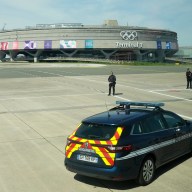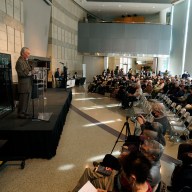A little piece of Edmonton that hitched a ride to Mars last summer has landed on the red planet and could help uncover the mystery of whether or not we’re alone in the universe.
A wind sensor named Telltale that was invented at the University of Alberta was selected to accompany the Phoenix Mars Lander in NASA’s first ever Scout Mission.
The rocket shipping the Phoenix launched last August, and finally on Sunday safely reached the northern arctic plains of Mars.
“The landing process was the most dangerous part of the trip,” said Carlos Lange, a U of A professor who was a key contributor to the mission. “Thank God everything worked because we landed perfectly — actually, more perfectly than we expected.”
Evidence suggests there was once water flowing on Mars, an indication to researchers that it might be able to sustain life, or might have once sustained it.
In its time on Mars, Phoenix will dig through the 10-cm topsoil layer to water-ice below and will collect samples for scientific evaluation.
Telltale will play an important role in the process.
It was built to study the effect of wind on the water cycle in the polar region of the planet and will help identify zones that could sustain life.
“The habitability is the question we want to ask,” Lange said. “We don’t know if life will be there, but we want to be able to inform future missions where they should look for life.”
He added that in previous missions, all searches for life were done around the planet’s equator, where the conditions are very dry, hot and not protected by the planet’s ozone layer.
“We know things don’t survive there, but protected by a layer of soil, they could survive,” he said. “Life as we know it needs water. Can the ice on Mars maybe melt for a few days or even hours? These are the things we aim to find out.”
–victoria.handysides@metronews.ca
















